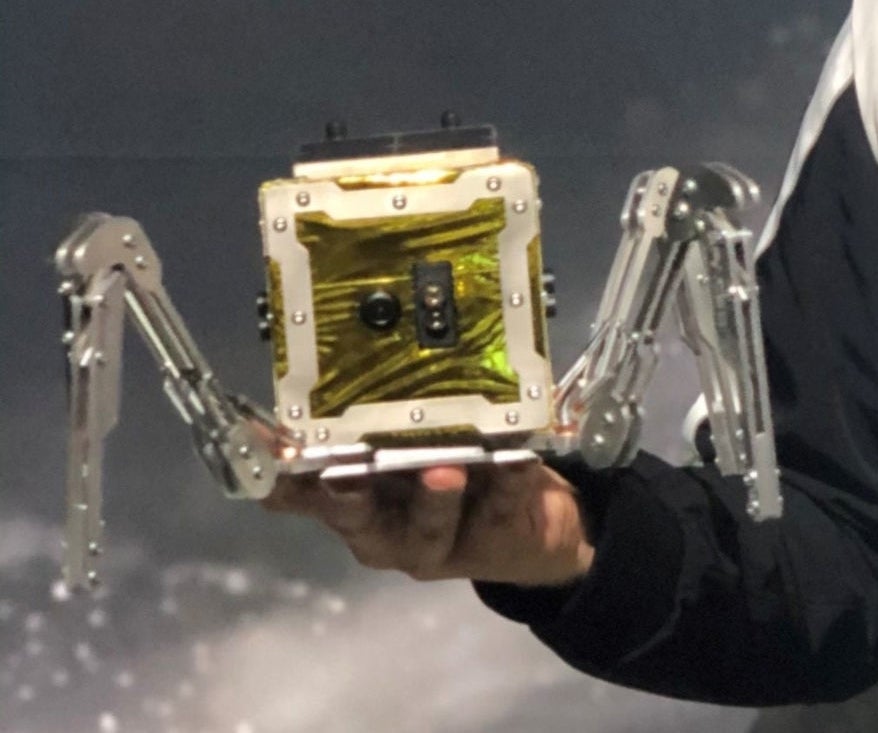UK to send robot spider to the moon in first ever lunar mission
Strange machine will explore surface ahead of future human landings

The UK’s first ever moon rover will head to the lunar surface in 2021.
The tiny robotic lunar lander – the smallest ever made – has legs instead of wheels and resembles a spider.
It will walk over the moon’s surface with the aim of informing future human missions.
If successful, the UK will become only the fourth ever country to put a rover on the moon, after the US, Russia and China. A recent attempt by a private Israeli company ended in disaster when the lander crashed on the surface.
Unveiled during the New Scientist Live event at London’s ExCeL, the robot was designed by UK start-up space company SpaceBit.
Best Nasa pictures of the month
Show all 10SpaceBit founder Pavlo Tanasyuk said: “Our goal is to go there and see what is available there for all humanity to explore.”
He added that, unlike rovers with wheels or tracks, this robot with four legs would provide an opportunity for “something a little bit like a human” to explore the lunar surface.
In May, Nasa announced that Astrobotic and two other companies had been awarded funding to build lunar landers.
Astrobotic was awarded millions of dollars to carry up to 14 Nasa instruments to the moon as well as 14 payloads from other partners.
SpaceBit will be one of those partners, sending the rover to the surface inside Astrobotic’s Peregrine lander.
It is expected to land near the region of Mare Serenitatis – the Sea of Serenity – in June or July 2021.
Once the lander reaches the moon, the 1.5kg (3lb 5oz) rover will drop from beneath it to the surface along with other payloads.
(PA)
It will scuttle across the surface taking measurements and collecting exploration data.
The rover is battery-powered, but a small solar panel will also harness energy from the sun.
It also has two cameras that will enable it to take “robot selfies”, SpaceBit said.
The reason for the legs is to allow the robot to enter lava tubes in future missions, which has not been possible before.
Ukrainian-born Mr Tanasyuk said: “After we land, we will be exploring the moon surface, and hopefully we will be able to the get into the lava tubes and explore the environment there.
“So we hope to find a stable temperature which will be suited for future human missions to the moon.
“It is a rugged environment in the lava tubes so you can’t really use wheels there – that was why we had to design these legs instead of wheels.”
The SpaceBit rover can withstand temperatures from up to 130C (266F) to minus 130C (minus 202F) at night, and will explore for the duration of a lunar day.
Mr Tanasyuk added: “It will spend up to 10 days on the moon before going into the night and basically freezing forever.”
While the robot has an in-house name, this has not been made public as SpaceBit hopes to launch a competition in the UK, asking children to name it.
Additional reporting by agencies
Subscribe to Independent Premium to bookmark this article
Want to bookmark your favourite articles and stories to read or reference later? Start your Independent Premium subscription today.

Join our commenting forum
Join thought-provoking conversations, follow other Independent readers and see their replies